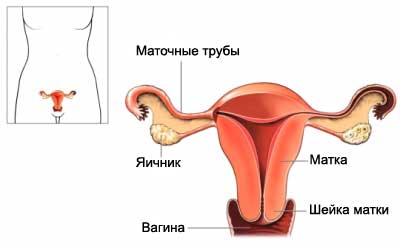Hysteroscopy
Description hysteroscopy
Hysteroscopy involves the use of a hysteroscope to explore the female uterus. Hysteroscope – long, delicate instrument with a camera on the end. After the hysteroscope into the uterus may be introduced other miniature medical instruments.

Reasons for hysteroscopy
Hysteroscopy is performed in the following cases:
- To examine the inside of the uterus to identify problems or irregularities in the case of certain disorders:
- Repeated miscarriage;
- Infertility;
- Abnormal results Pap smears;
- Abnormal uterine bleeding, or postmenopausal;
- To correct anatomic problems and defects of the uterus during the procedure:
- Endometrial ablation – removing the inner lining of the uterus;
- Myomectomy – removal of fibrous or muscular tissue (fibroids);
- Removing polyps (usually, benign);
- Removal of intrauterine devices (Navy).
Result hysteroscopy depends on the reason the procedure. In some cases, the doctor can immediately treat the disorder. Other cases may require further surgery or other treatment.
Possible islozhneniya hysteroscopy
Complications are rare, but no procedure does not guarantee the absence of risk. Before, how to perform a hysteroscopy, you need to know about possible complications, which may include:
- Swelling or bleeding;
- Infection;
- Organ damage;
- Reaction to anesthesia.
Factors, that may increase the risk of complications:
- Presence of the past pelvic inflammatory disease;
- Inflammation of the cervix;
- Distension of the bladder;
- Pregnancy or possible pregnancy;
- Allergies to surgical materials (eg, iodine, latex, drugs, Anesthetic).
How is hysteroscopy?
Preparation for the procedure
Doctor, probably, perform these steps::
- Ask about your medical history, take medication allergy;
- Appoint a medical examination and a blood test.
In the run-up procedure:
- Consult your doctor about the drugs taken. A week before surgery you may be asked to stop taking some medicines:
- Anti-inflammatory drugs (eg, aspirin);
- Blood thinners, such as clopidogrel (Plaviks) or warfarin;
- It is necessary to arrange the delivery to the procedure and back home from the hospital. Besides, We need to organize care at home;
- In the evening before the test can be taken only a light meal. On the day of the procedure can not eat anything.
Anesthesia
Depending on the cause of Hysteroscopy, may include the following types of anesthesia:
- General anesthesia – blocks any pain and the patient support in a sleep state during operation. Administered intravenously in the arm or hand.
- Regional anesthesia – blocks pain in a particular area of the body, the patient is awake. Administered by injection.
- Local anesthesia – anaesthetises body, during surgery, the patient is awake. It can be provided in the form of injections.
Procedure hysteroscopy
It will be introduced into the vagina spreader, like used when performing Pap smears. It will support the vagina open and allow you to easily enter into it the necessary tools. The doctor cleans the vagina and if necessary, can extend the cervix. Then, through the vagina and cervix is entered hysteroscope. The uterus is filled with carbon dioxide or liquid. This will expand the uterus and allow the doctor to examine it in detail wall.
If the procedure is carried out for diagnostic reasons, the doctor will examine the uterus for the presence of abnormal tissue. It may be taken biopsy or flush with the wall of the uterus, to obtain samples of cells.
If the procedure is done for medical reasons, the doctor through the hysteroscope introduces the tools necessary. He will use them, to remove diseased tissue. In some cases, the doctor will use a laparoscope, which is introduced into the peritoneal cavity. This allows you to see the outer wall of the uterus and to avoid possible punctures of the uterus hysteroscopy.
How long will hysteroscopy?
About 15-45 minutes (Whether longer for therapeutic procedure).
Hysteroscopy – Will it hurt?
May have mild cramps and pain. To reduce the pain doctor gives painkillers.
Care after hysteroscopy
When you return home, Follow these steps:, to ensure the normal recovery:
- Rest as needed. Ask someone to help you at home;
- Recovery time is minimal. Return to normal activity may be the next day after the procedure;
- Do not take medications without a doctor's permission. Some medications can exacerbate bleeding;
- Keep in mind, they can be difficult to visit a toilet during the few hours after the procedure. Also, there may be watery or bloody vaginal discharge for 3-4 weeks;
- You may have bleeding or discharge from the vagina for a few postoperative days. During this period, you need to use pads;
- Ask the doctor, when you can have sex, use tampons, or inserted into the vagina other items;
- Be sure to follow your doctor's instructions.
Contact your doctor after hysteroscopy
After returning home, you need to see a doctor, If the following symptoms:
- Signs of infection, including fever and chills;
- Abnormal bleeding (in the absence of menstruation);
- Foul-smelling vaginal discharge;
- Abdominal pain;
- Nausea, vomiting;
- Cough, breathlessness, difficulty swallowing, chest pain;
- Problems with urination;
- Other worrisome symptoms.
